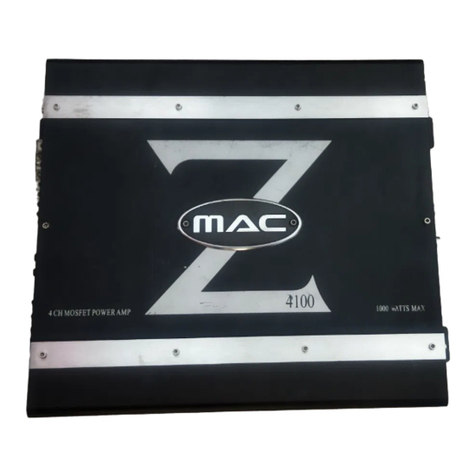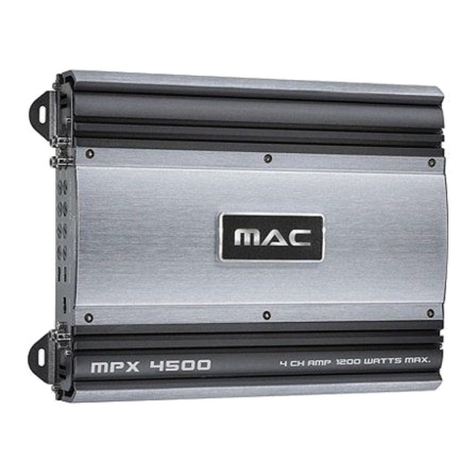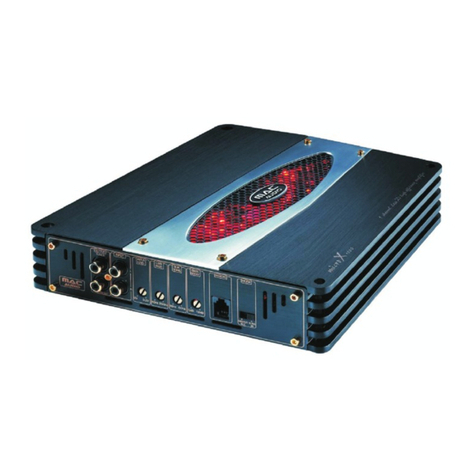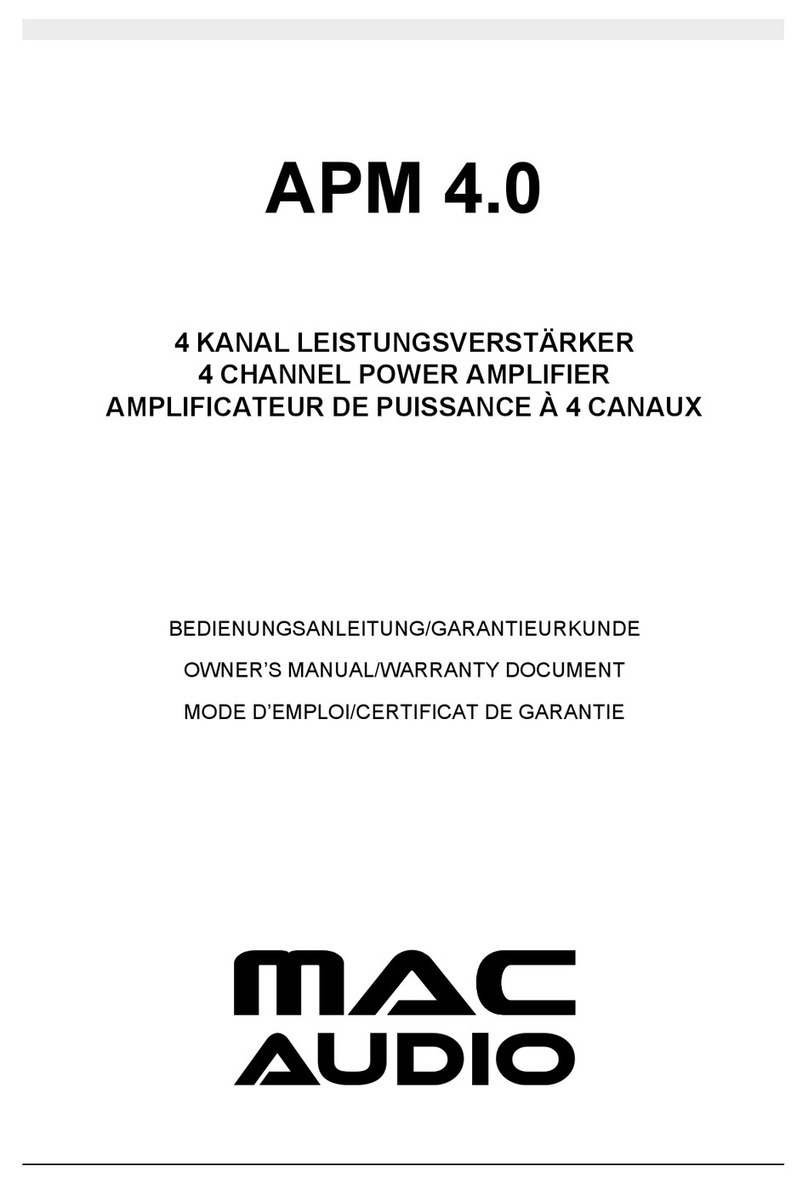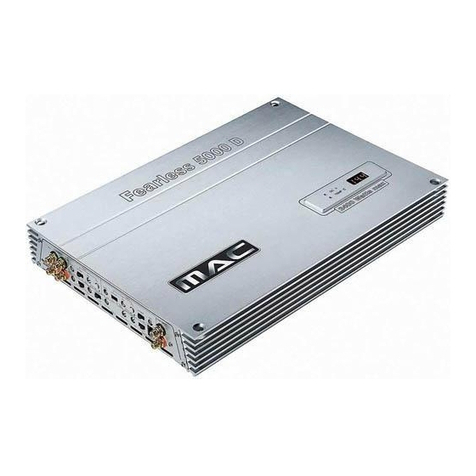Sehr geehrter MACAUDIO - Kunde,
mit dem Besitz des Car HiFi Leistungsverstärkers MPX 2000 / MPX 2500 können Sie
Ihre hohen Ansprüche an die Klangwiedergabe im Auto auf souveräne Weise erfüllen.
Der MPX 2000 / MPX 2500 eröffnet neue Qualitäten der Car HiFi-Wiedergabe imAuto;
sei es die beeindruckende Leistungsreserve für Tiefbässe, der niedrige Klirrfaktor oder
die neutrale Wiedergabe. Der Verstärker zeichnet sich durch einen niedrigen
Treiberstrom, schnelle Schaltfähigkeit und ausgezeichnete Temperaturstabilität aus.
Durch Zusammenschaltung von jeweils zwei Verstärkerkanälen zu einem Verstärker im
Brückenbetrieb kann eine verbesserte Dynamik in Verbindung mit einer höheren
Ausgangsleistungerreichtwerden.ErlebenSie,wiediesesHighTech-Gerätaufperfekte
Weise großartiges Klangempfinden vermitteln kann. Dazu wünschen wir Ihnen viel
Vergnügen.
Bitte lesen Sie die Einbauanleitung vollständig durch, bevor Sie den Verstärker
einbauen und in Betrieb nehmen.
1. TECHNISCHE DATEN MPX 2000
Stereo / Gebrückt
Max.Ausgangsleistung
(1 kHz Sinus Burst 2:8, B+=14,4V) 2 x 180 W / 1 x 500 W an 4 Ohm
Nennausgangsleistung (DIN 45 324, B+=14,4V) 2 x 60 W / 1 x 160 W an 4 Ohm
Max.Ausgangsleistung
(1 kHz Sinus Burst 2:8, B+=14,4V) 2 x 250 W an 2 Ohm
Nennausgangsleistung (DIN 45 324, B+=14,4V) 2 x 80 W an 2 Ohm
Lautsprecherimpedanz (Stereo) 2 – 8 Ohm
Frequenzgang 5 – 50 000 Hz (-3 dB)
Gesamtklirrfaktor (DIN 45 403) < 0,05 % (1 kHz)
Übersprechdämpfung (IEC 581 ) > 60 dB (1 kHz)
Geräuschspannungsabstand (IECA) > 100 dB
Eingangsempfindlichkeit LOW LEVEL INPUT 400 mV - 4V
Eingangsimpedanz LOW LEVEL INPUT 20 kOhm
Tiefpassfilter 40 – 300 Hz, 12 dB pro Oktave
Hochpassfilter 40 – 300 Hz, 12 dB pro Oktave
Bass Boost 0...12 dB bei 45 Hz
Versorgung + 12 V (9 – 15 V), Minus an Masse
Sicherung 1 x 20A
Abmessungen (B x H x T) 239 x 59 x 226 mm
Gewicht 1,9 kg

